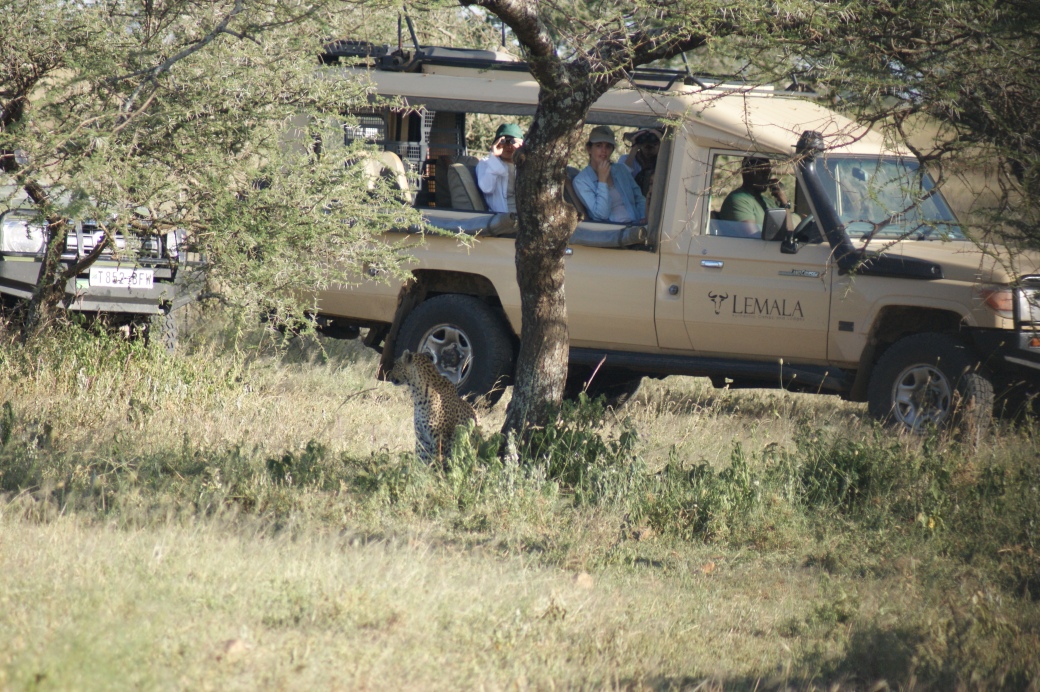Note: I wrote most of these haiku myself and took all the photographs. The haiku “Photography” was written by Dale Berman (my husband); “On Safari” (with slight modification) and “Origins” were written by other members of our Tanzanian Safari group. Posted for Cee’s Fun Foto Challenge: Wildlife.
Wildebeest
Is it possible
that the gnu knew? Or was he just
a bewildered beast?

Wildebeest is the Afrikaans name for gnu.
Zebra
Zebras’ stripes, black, white
Black and white and black and white
But no two alike.

Baby zebras have brown stripes which gradually turn black.
Migration
Zebras know the route.
Wildebeest can smell water.
They move in tandem.

Zebras and wildebeest are often seen together. They have a similar goal: to find the best grass for the season.
Lions
Are lions lazy?
They’re always lyin’ around.
First: hunt, eat; then rest.

Female lions live in a pride with their cubs. Both male and female adult lions often hang around with their litter mates of the same gender.
Thomson’s Gazelle
Constantly swishing
black tail of Thomson’s gazelle
back and forth and back.
Genet
Whiskers and black spots
Curious big eyes, ringed tail
It is not a cat!

This captivating animal is a carnivore which eats small prey, such as mice and lizards. Although cat-like, it is not related to cats.
Impala
Graceful impala
Big ears constantly alert:
Predators nearby.

Impalas are the most common gazelle seen on the African plains. They are often seen in all-male and all-female groups. Only the males have horns.
Leopard
The elusive leopard
High in the acacia tree
Descends for a meal.

Leopards can be hard to spot – they usually spend the day high in a tree.
Hyena
Ugly hyena
He feasts on young wildebeest
Bloodied and cackling.

Hyenas are not dogs, but often work together to hunt their prey. They also feed on carrion.
Hyraxes
Small, furry creatures
Living in rocky kopjes
Elephant cousins?!

Believe it or not, this guinea pig-sized animal is a distant relative of the elephant!
Ostrich
Ostrich on the plain
Long neck craning, pink legs run
Flurry of feathers!

Male ostriches have black feathers and pink legs. Female ostriches have grey feathers and their legs are slightly lighter in color.
Giraffe
High above the ground
Ungainly shape yet graceful
Nibbling tops of trees.

Giraffes grow to 17-18 feet. Their young at birth are 6 feet tall!
Elephants
With mud-caked skin, they
Lumber on African plains
Their youngsters close by.

Weaver
Pert yellow weaver
Weaving a nest to impress
He hopes she approves.

Male weavers (see his head sticking down just under the nest?) make nests out of grass, twigs and other things they find. The female weaver will move in with the male that makes the best nest!
A watery life
Just their snouts protrude
out of the water to breathe.
Hippos in a pond.

Hippos prefer to spend much of their day in the water. However, they can be seen on land looking for grass.
On Safari
Dust swirls ‘round the truck
As more jeeps gather nearby
Big cats wish us away.

Origins
We all started here
Herds migrate; hunters follow.
The bright continent.

The top two photos show an ancient buffalo skull and that of an ancestor of humans: homo habilis. The dots on the map show archaeological sites where hominin remains have been found.
Photography
Pictures were taken
Memories are kept alive
Trip not forgotten

Group photo taken the morning of our departure, including the staff at Ang’ata Safari Camp at Serengeti National Park.




That was great – love the poetry and the photos
Thank you, Deb!
Wonderful photos for the week. Terrific gallery.
Thanks, Cee!